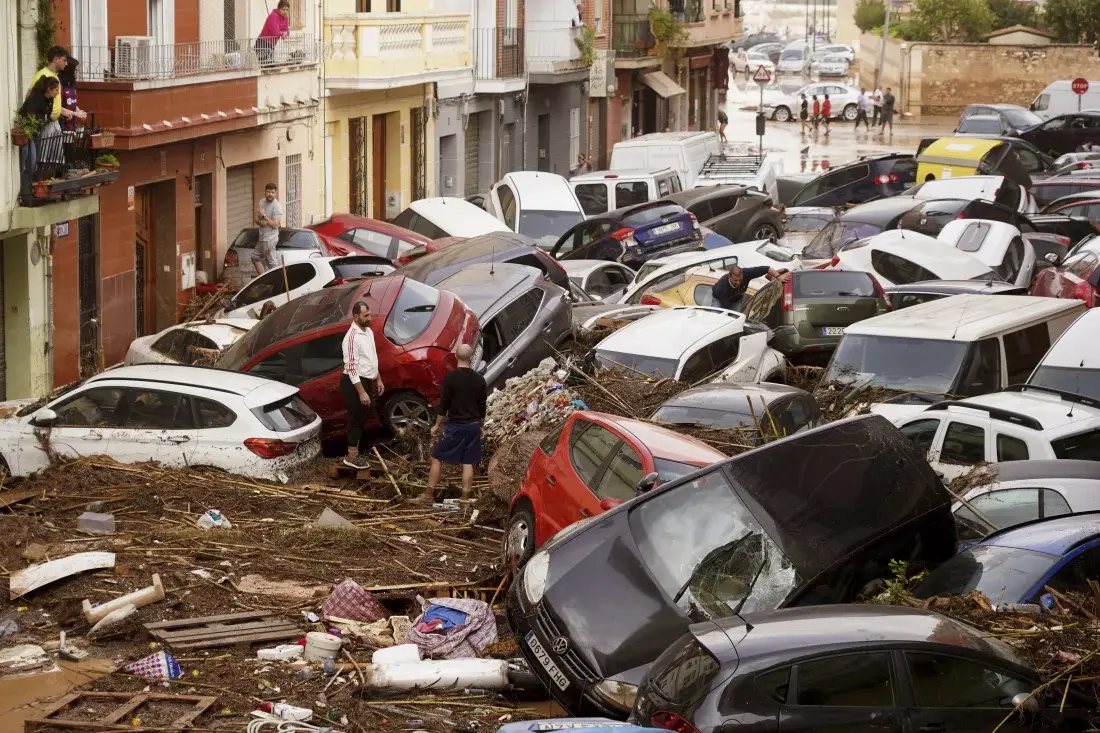Massive rainfall this week in Spain has left parts of its eastern coast resembling an inland sea, as extreme flooding covered vast areas, submerging towns and erasing landscapes. Satellite images taken before and after this unprecedented event reveal how the flooding dramatically altered the region’s topography, giving the coastal areas the appearance of islands amid a sea of floodwaters.
Unprecedented Rainfall and Devastation
In just a few hours on Tuesday, east-central Spain experienced a year’s worth of rainfall, sparking severe flooding across the region. This historic downpour turned streets into rivers, washed away cars and bridges, and caused rivers to breach their banks. The resulting flash floods left at least 155 people dead, underscoring the severity of extreme weather patterns that scientists link to climate change.
A Region Transformed: Before and After
Satellite images taken on October 8 and October 30 reveal the profound changes to the landscape. Once visible patches of dry ground, shown in greens and browns, are now submerged under various shades of blue, marking the extent of floodwaters. Waterways that appeared narrow or invisible before the storm—such as the river running south of Valencia’s city center—have swelled significantly, turning areas near the Balearic Sea into virtual islands.
Valencia Hit Hard with Massive Flooding
Valencia’s surrounding areas, including Sedaví and Chiva, bore the brunt of this deluge. In Sedaví, floodwaters left cars and debris piled in the streets, a testament to the force of flash flooding that swept through the city. In Chiva, just west of Valencia, rainfall measured nearly 19 inches in only eight hours, according to Spain’s meteorological agency, AEMET. This amount, equivalent to what the area would typically experience over an entire year, was enough to submerge roads, flood buildings, and cut off communities.
The Climate Factor
Experts have linked this extreme rainfall event to climate change. According to a rapid analysis by World Weather Attribution, this week’s rainfall was approximately 12% heavier and twice as likely due to human-induced warming. Rapid analyses of this kind are crucial in the wake of extreme events, as they provide insight into the role of climate change through data and climate models.
Read: Bill Clinton Faces Backlash Over Comments on Israel-Palestine Conflict
Rescue and Recovery Efforts Continue
The flood’s aftermath has left dozens of people missing, with rescue teams working around the clock to locate survivors and recover bodies. Thus, the sheer scale of the flooding has complicated these efforts, as many affected areas remain difficult to access.
Climate Change and Future Outlook
This event highlights the increasing frequency and intensity of extreme weather in regions like southern Europe, where rising global temperatures make heavy rainfall events more likely. As experts and policymakers evaluate the impact of these disasters, there is a growing need for climate adaptation measures to protect vulnerable regions from future catastrophes.
The flooding in Spain serves as a stark reminder of the urgency of addressing climate change to prevent further weather extremes.
Follow us on Google News, Instagram, YouTube, Facebook,Whats App, and TikTok for latest updates
